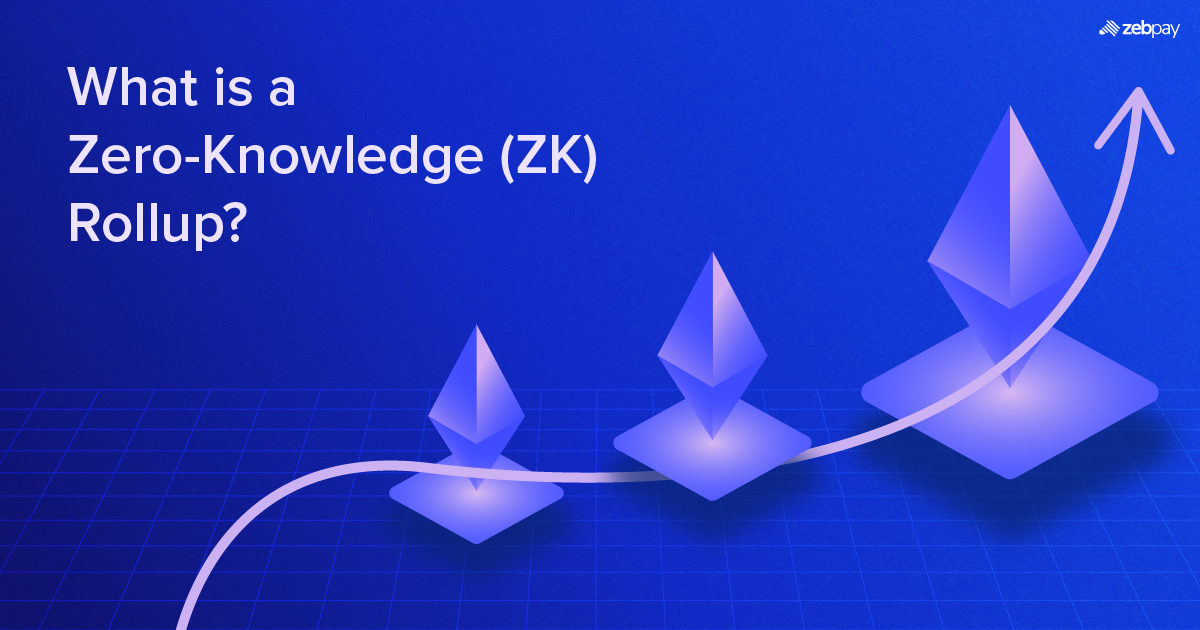Towards the end of 2020, there was a rise in the application of NFTs, yield farming, and smart contracts on the Ethereum network. This rise led to the need for faster processing speeds and cheaper transactions. Developers started solving this issue by creating layer 2 blockchains (a secondary framework built on top of an existing blockchain).
One such scalability solution came in the form of developments like zero-knowledge rollups. Let’s understand what they are and how they function!
What Is a ZK rollup?
Zero-knowledge rollup (or ZK-rollup) is a layer 2 scalability solution that enables blockchains to validate transactions faster and at a cheaper rate. It performs better than the traditional Ethereum Layer 1 blockchain by combining on-chain and off-chain processes. It combines a large number of Layer 2 transactions to execute them off-chain at once and submits them as one transaction on Ethereum’s blockchain.
Read About: What Is Blockchain Layer?
ZK-rollups use a cryptographic proof technique called Zero-Knowledge Proofs (ZKPs) to instantly prove the validity of transactions. However, developing an Ethereum Virtual Machine compatible ZK-rollups is considered a complex task by developers.
Some of the examples of Ethereum Layer 2 blockchains that leverage ZK-rollups are Starknet, dYdX and ImmutableX for perpetual contracts on Ethereum. Protocols like Loopring, zkSync, Yearn Finance, Zcash, FRAX, and Zerion also make use of zero-knowledge rollups.
How Do ZK Rollups Function?
ZK rollups are based on the concept of zero-knowledge proofs (ZKPs). ZKP is a sort of cryptographic proof in which the prover can demonstrate to the verifier that a particular statement is true without ever communicating it.
For example, let’s say a maths teacher (verifier) wants to know if a student (a prover) has the same answer as everyone else without actually looking at his answer. Hence the name “Zero-Knowledge”. “The Ali Baba’s cave” and “Two balls and the colour-blind friend” are two abstract examples of the concept of zero-knowledge proofs that can be found here.
The way to understand Zero-Knowledge proofs is by thinking about hash functions. Hash functions are mathematical functions that return a unique value for every input. Therefore, if the prover and the verifier get the same unique hash value by inputting their statements in the same hash function, it would imply that the inputs were the same.
This is the essence of zero-knowledge proofs. An application of Zero-knowledge proofs apart from ZK rollups is to maintain data privacy in industries like Healthcare and financial services. These are industries where user data needs to be referred to all the time but it raises questions about customer privacy. Zero-knowledge proofs can allow companies to retrieve and use information from the data without actually looking at it.
As a result, ZK rollups employ zero-knowledge proofs to consolidate and validate a large number of transactions off the chain. Then, they submit the transactions as one onto the Layer 1 mainnet of Ethereum.
Conclusion
Zero-Knowledge Rollups are a type of layer 2 scaling solution that helps in making transactions cheaper and faster. They bundle a large number of transactions together and validate them off-chain in order to save data and time. The mathematical conceptual foundation behind ZK rollups is Zero-Knowledge Proofs that allow verifiers to confirm the truth without actually looking at it.

